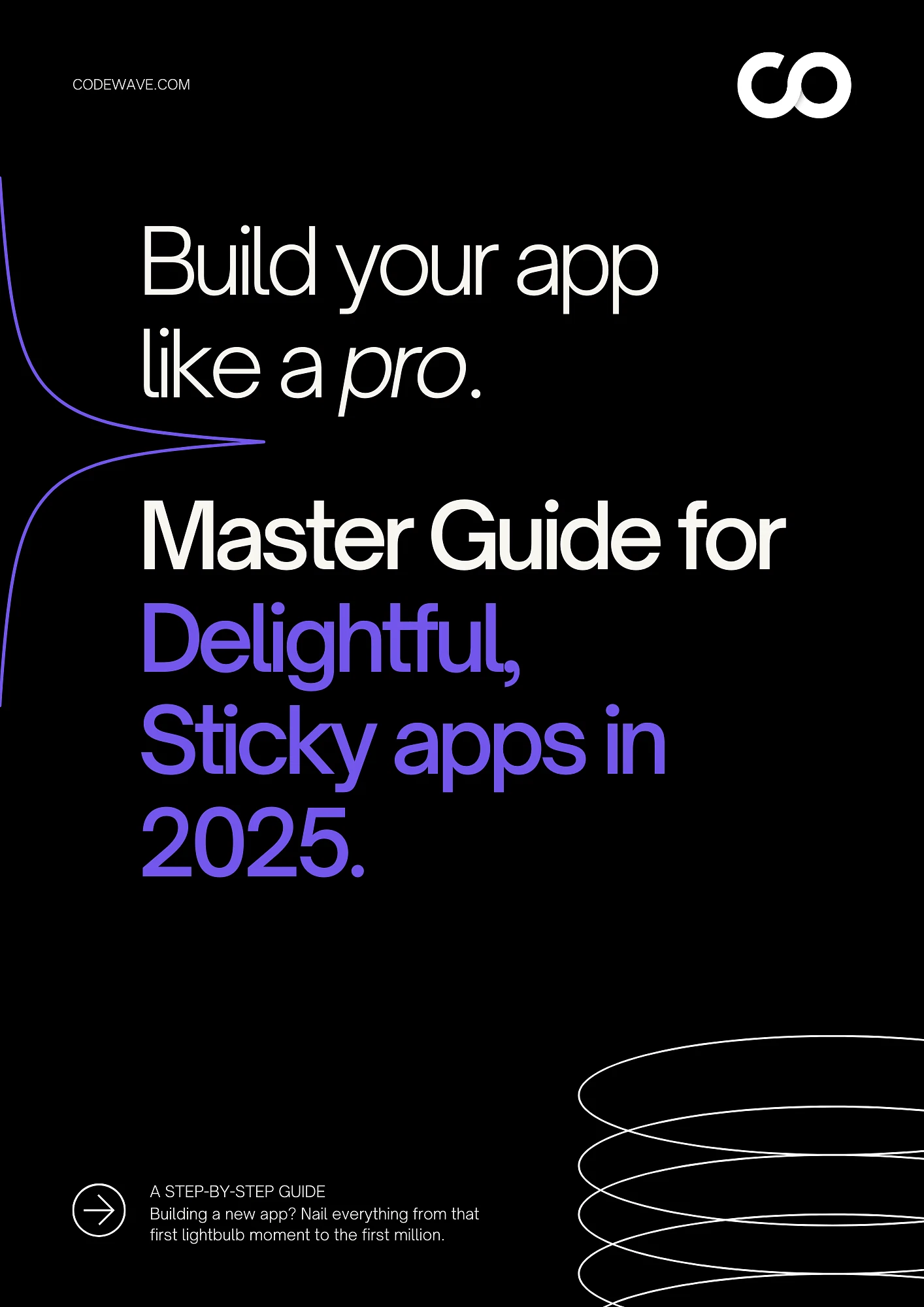When building mobile apps, the choice between native and cross-platform development can make or break your project. With 8.4% of developers opting for React Native to build both iOS and Android apps from a single codebase, this framework has quickly gained popularity.
However, React Native does have limitations, including challenges with UI customization, performance issues for complex applications, and difficulties in integrating certain native features.
In this guide, we’ll explore the key benefits, the best approaches to development, effective strategies for overcoming these challenges, and best practices to ensure your app meets both user expectations and business needs.
Key Takeaways:
- React Native enables cross-platform development, allowing developers to write a single codebase for both iOS and Android, reducing time-to-market and costs.
- Benefits include flexibility, modular architecture, and support for third-party libraries, which enhance performance and speed up development.
- Ideal Use Cases: React Native is perfect for MVPs, POCs, and apps requiring rapid deployment, like social media apps and e-commerce platforms.
- Challenges: UI customization and performance issues can arise, particularly for complex apps with native features or high-performance demands.
- Best Practices: Focus on modular project structure, use functional components, optimize performance, and engage with the React Native community for continuous improvements.
The Top Benefits of React Native: Why It’s Perfect for Your Next Mobile App
React Native offers several advantages that make it highly suitable for modern app development. Here’s an overview of the key benefits:
1. Flexibility and Modular Architecture
React Native allows developers to integrate native modules seamlessly, enabling the use of platform-specific code alongside JavaScript.
This flexibility is particularly useful when the app needs custom native features or performance optimization, as parts of the code can be written in native code, such as Swift for iOS or Java for Android.
- Modular architecture enables easy scaling, especially in large apps. Components and features can be developed in isolation and then connected with minimal impact on the entire app’s performance.
2. Support for Third-Party Libraries
React Native supports a broad range of third-party libraries, providing easy integration with existing tools and features, including analytics, payment gateways, and geolocation services.
These libraries save time and enhance functionality, reducing development costs significantly.
- Key Insight: Popular libraries like React Navigation for seamless navigation, Redux for state management, and Firebase for backend services can simplify development, enabling faster deployment.
3. Comparison with Native and Cross-Platform Options
React Native presents a middle ground between native app development (which requires separate codebases for iOS and Android) and other cross-platform tools (which might not offer native-level performance).
It allows developers to write one codebase that works across platforms, reducing time-to-market while still providing near-native performance.
- Performance: React Native’s use of native components makes it more efficient than traditional hybrid frameworks like Cordova or PhoneGap.
- Native Code Flexibility: Unlike other frameworks, React Native allows easy linking to native code, making it a suitable choice for performance-intensive apps.
Note: React Native is especially effective for projects with fast timelines and smaller budgets, while apps requiring heavy native integrations might still benefit from native development.
Now that we’ve established React Native’s benefits, let’s look at the different approaches you can take when developing apps, and how to choose the best one based on your project needs
React Native Development: Key Approaches for Building High-Performance Apps
When building a React Native app, developers have several approaches at their disposal, each with its own set of advantages and limitations.
1. Direct Development Using Native Environments
In this approach, React Native mobile apps are developed using the native IDEs and tools for both platforms (Xcode for iOS and Android Studio for Android). This allows for deeper integration with the operating system and optimizations for each platform.
Advantages
- Full access to native capabilities and APIs.
- More control over device-specific features, ensuring a smooth experience across platforms.
Limitations
- Requires knowledge of both iOS and Android environments.
- Complex setup and configuration, especially for advanced native features.
2. Advantages and Limitations of Using Expo
Expo is a set of tools built around React Native that makes it easier to build apps without configuring native build environments. It provides an out-of-the-box environment with essential features like push notifications, camera, and location services.
Advantages:
- Faster development setup.
- Ideal for prototypes and MVPs.
- Offers a managed workflow that automates most native configurations.
Limitations:
- Limited to the Expo SDK and does not allow full access to every native API.
- Difficult to customize certain components or implement highly specific native code.
Key Insight: Expo is ideal for prototyping and MVPs, but for complex apps that need fine-tuned performance, native development, or custom configurations might be required.
Also Read: Building and Optimizing Injectable React Services in Your Application
3. Suitability of Expo for Prototyping and MVPs
For quick development and early-stage product testing, Expo provides a streamlined approach. It offers ready-to-use components and simplifies the development workflow, making it perfect for fast iteration and deployment.
- Use Case: If you need to launch a proof of concept (POC) or MVP quickly, Expo can help you get up and running in no time, cutting down the development cycle significantly.
Struggling with mobile app development? At Codewave, we simplify the process, delivering high-performance, scalable apps that align with your business goals. With a 30% reduced cost and 3 times faster delivery, we ensure quality every step of the way. Discuss your app idea, and let’s create something impactful together.
Furthermore, not every project is a perfect fit for React Native, but many are. Let’s explore the types of projects that align well with React Native’s capabilities and how you can use them.
When to Choose React Native: Ideal Use Cases
React Native is ideal for certain types of projects where its strengths in rapid development and cross-platform capabilities are fully utilized. Here’s a breakdown of its most suitable use cases:
1. Suitable Projects: MVP and POC
React Native excels when time-to-market is critical, especially for Minimum Viable Products (MVPs) or Proof of Concepts (POCs), where the focus is on core functionality rather than native performance. Its cross-platform capabilities allow for quicker iterations and faster deployment.
Ideal for:
- Social media apps
- News apps
- E-commerce platforms
- On-demand services (e.g., ride-sharing, food delivery)
These types of apps often require frequent updates and scalability, making React Native the right choice for early-stage products.
2. Best Practices for Implementation
When developing React Native apps, especially for MVPs or POCs, follow these best practices to ensure a smooth and efficient development process:
- Prioritize Core Functionality: Focus on delivering the main features that will provide immediate value to users.
- Choose Simple, Reliable Libraries: Use libraries that are well-supported and do not require complex native customizations.
- Test Consistently on Both Platforms: Regularly test the app on both iOS and Android to ensure consistency and compatibility across devices.
3. Building and Using a JavaScript-Skilled Team
Since React Native is based on JavaScript, developers with web development experience can easily transition to mobile app development.
Skilled React Native team accelerates the development process, ensures consistency across platforms, and seamlessly integrates web and mobile features.
This is particularly valuable when developing apps that require quick iterations and frequent updates, such as social media apps, e-commerce platforms, and on-demand services.
Also Read: Building an MVP Application: A Step-by-Step Mobile App Guide
As powerful as React Native is, there are some challenges you’ll encounter during development. Let’s take a look at some of the top problems.
Key Challenges in React Native Development and How to Overcome Them
React Native offers numerous benefits, but developers must tackle specific challenges, including UI customization, performance issues, and limitations for certain app requirements.
Below are the key challenges and their solutions to ensure successful app development.
| Challenge | Description | Solution |
| 1. UI Customization | Customizing UI to meet platform-specific guidelines can be complex. | Use libraries like React Native Paper and NativeBase for a consistent UI across platforms. |
| 2. Performance & Stability | Complex apps with heavy computations or animations may experience performance issues. | Apply Lazy Loading, Memoization, and Native Modules API. Optimize re-renders using PureComponent and shouldComponentUpdate. |
| 3. When React Native Isn’t Ideal | Apps that require complex native features (e.g., AR/VR or high-performance gaming) may not perform well. | Opt for native development for high-performance apps or hybrid frameworks for cross-platform compatibility with lower demands. |
Looking to Elevate Your User Experience? Great design doesn’t just attract users, it engages them and builds lasting brand loyalty. Codewave’s UI/UX design services create human-centric, seamless experiences that drive 3X more engagement, reduce user errors, and boost conversions—all at 30% lesser cost.
Best Practices for React Native Development
To ensure optimal performance and maintainability, it’s essential to follow best practices in UI customization, performance tuning, and community involvement.
These practices help maintain consistency, improve efficiency, and keep your app aligned with the latest React Native advancements.
1. Effective UI Customization Strategies
Ensure your app delivers a consistent and platform-optimized user experience.
- Stick to Platform-Specific Design Guidelines: Follow Material Design for Android and Human Interface Guidelines for iOS to ensure consistency.
- Use Styled-Components: Use styled-components to maintain uniform styling across both platforms, simplifying app maintenance.
- Regular UI Testing: Test your UI across various devices and screen sizes to guarantee responsiveness and consistency.
2. Enhancing Performance and Stability
Focus on performance optimization to enhance speed and app stability.
- Optimize Render Performance: Use PureComponent and shouldComponentUpdate to minimize unnecessary re-renders and improve performance.
- Use FlatList for Large Data: Replace ScrollView with FlatList for handling large datasets more efficiently and reducing memory usage.
- Avoid Unnecessary Re-renders: Implement React.memo to prevent re-renders of unchanged components, boosting app efficiency.
3. Engage with the React Native Community
Stay connected with the React Native ecosystem for continued learning and improvement.
- Engage with the Community: Regularly follow GitHub and stay up-to-date with the latest React Native updates to incorporate best practices and new features.
- Contribute to Open-Source Projects: Engage with and contribute to open-source React Native libraries to improve the ecosystem and access high-quality tools.
Codewave’s Expertise in React Native Development
At Codewave, we specialize in delivering tailored React Native solutions that address complex business needs:
- Cross-Platform Consistency: We build high-performance apps that work seamlessly across iOS and Android using a single codebase.
- Faster Development & Lower Costs: React Native enables rapid development, cutting down both time and expenses.
- Tailored Solutions: We customize apps to meet unique business needs, like music content management, while ensuring scalability and flexibility.
- Efficient User Experience: Our apps provide smooth, intuitive user experiences across all devices.
Explore our portfolio to see how we’ve helped businesses deliver innovative, scalable mobile apps.
Conclusion
Building high-quality, efficient React Native apps requires following best practices. Start by organizing your project structure and using functional components for better readability and maintainability.
Optimize image assets and minimize third-party libraries to keep your app light and fast. Improve performance with techniques like code splitting, memory management, and using FlatList for large datasets. Don’t forget to test on real devices and stay updated with the latest.
At Codewave, we build scalable React Native apps that run fast on iOS and Android with one shared codebase.
Cross-platform delivery reduces time to market and costs, while performance tuning, privacy, and security are built-in standards. You get frequent releases, smooth UX, and a stack ready for growth.
How do we help our clients?
Faster launch, lower spend, consistent experience across devices, fewer defects, easier maintenance, and room to iterate after release with data-led decisions.
What makes us stand out?
Everyone is a creator. Since 2013, we have practiced design thinking and small autonomous clusters. Our values are reflected in our work. You can be your own boss, with transparency, no secrets, empathy, a team-first approach, and authenticity.
Expect a team that owns outcomes, shares context openly, listens attentively, and delivers results.
FAQs
Q: How does React Native compare to other cross-platform frameworks like Flutter?
A: While React Native is based on JavaScript, which makes it easier for developers with web experience, Flutter uses Dart and may offer better performance for certain use cases. React Native is often preferred for its extensive community support, libraries, and ease of integration with native modules.
Q: What types of apps are not suitable for React Native?
A: React Native is not ideal for apps that require complex native features such as AR/VR or high-performance gaming. Apps that demand intensive graphics or deep integration with the underlying OS may be better suited to native development or other specialized frameworks.
Q: How can I optimize performance in React Native apps?
A: To optimize performance, use Lazy Loading, Memoization, PureComponent, and React.memo to prevent unnecessary re-renders. Also, consider using FlatList for rendering large datasets and native modules for performance-intensive features.
Q: How does React Native handle UI consistency across different devices?
A: React Native provides platform-specific UI components like React Native Paper and NativeBase, which ensure consistency across devices. Additionally, following platform design guidelines and regularly testing on multiple devices is crucial for achieving a uniform experience.
Q: Can React Native be used for enterprise-grade applications?
A: Yes, React Native can be used for enterprise applications, provided you carefully manage its limitations, such as UI complexity and performance. By using native modules for performance-critical features and adopting a modular architecture, enterprise-level applications can achieve scalability and maintainability.
Codewave is a UX first design thinking & digital transformation services company, designing & engineering innovative mobile apps, cloud, & edge solutions.







